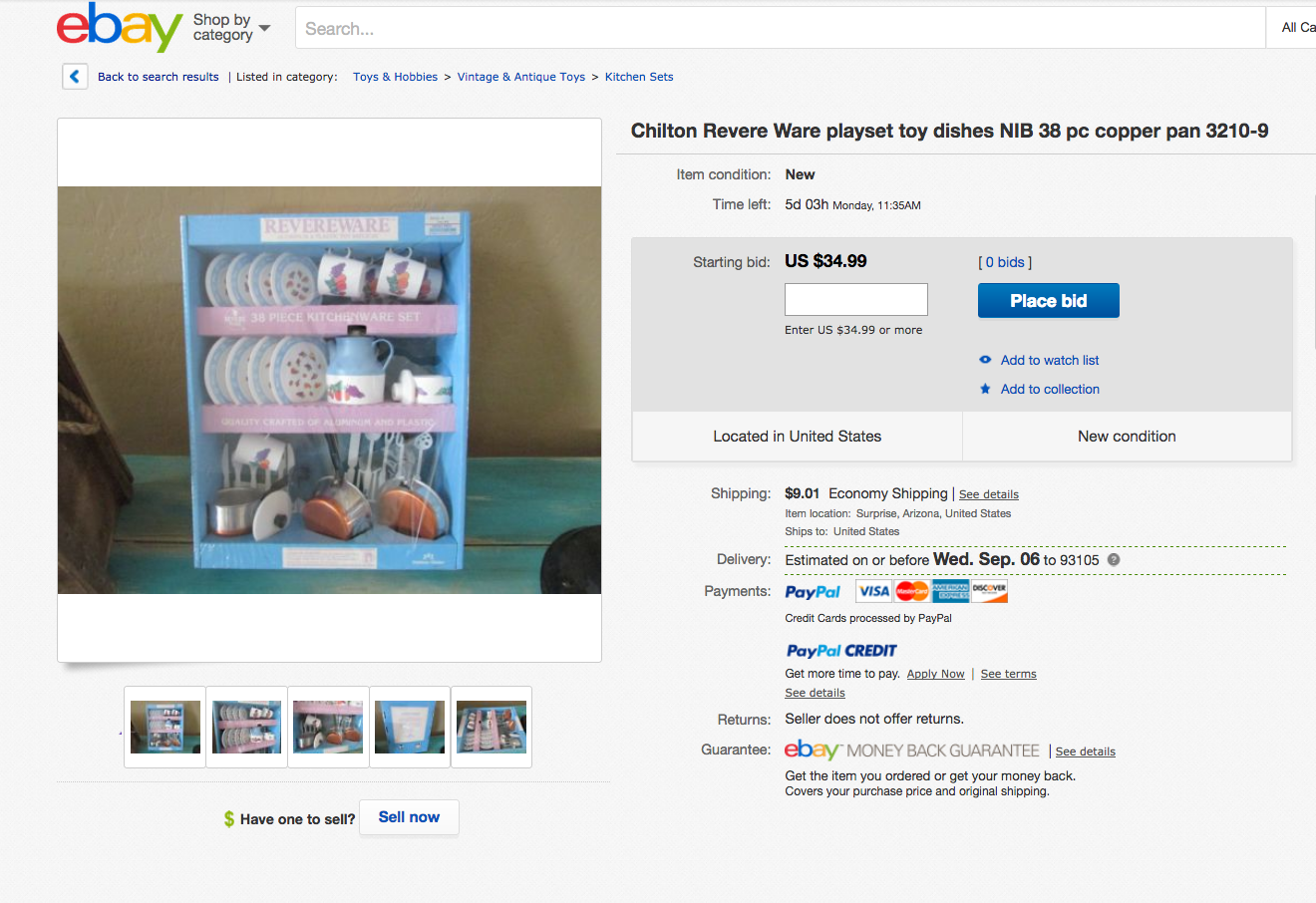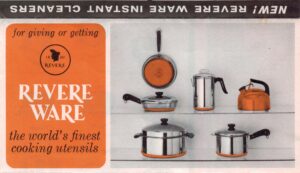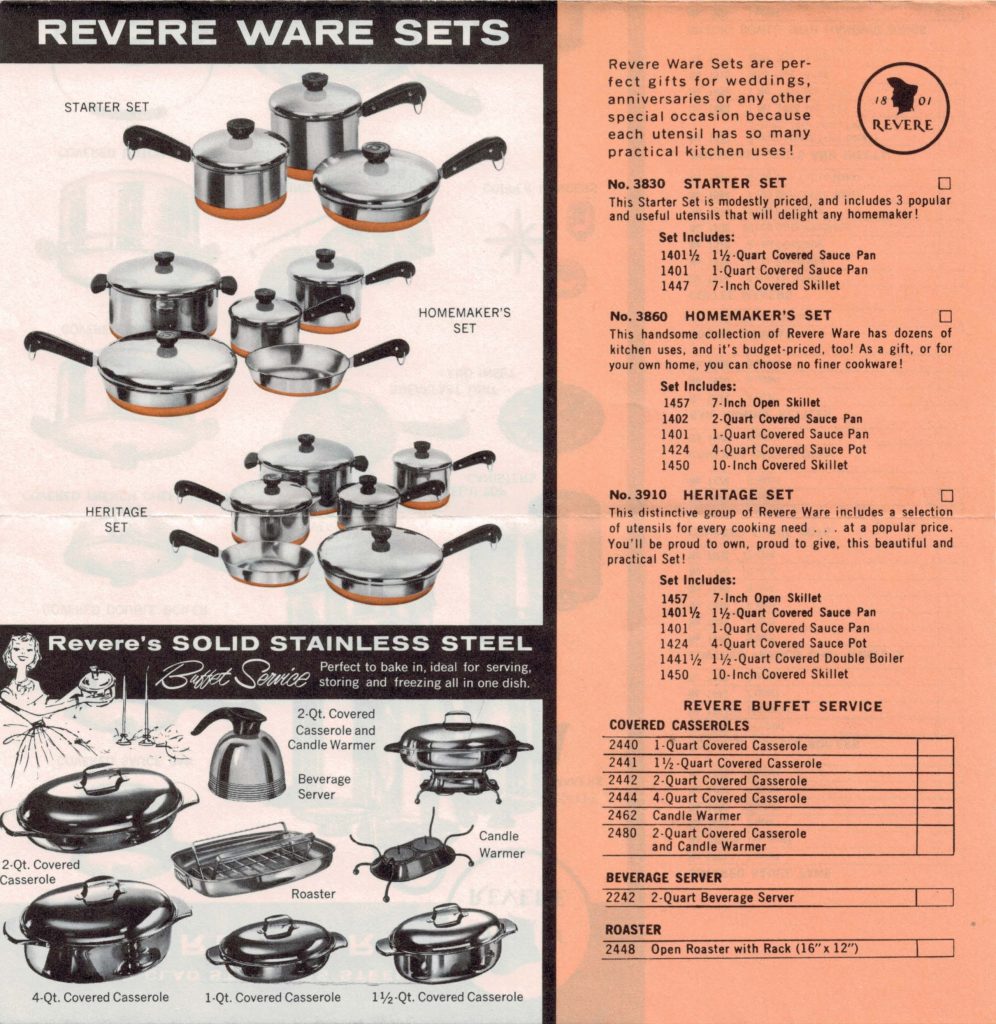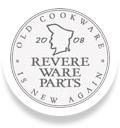We found this great video on using and caring for your stove top percolator.
Archive | 2017
Measuring the value of our parts, part 2
We’ve discussed the economics of small batch manufacturing and the comparative pricing of other similar mass-manufactured parts. By that measure, what we sell might look expensive (but is justified given how much it costs to manufacture in smaller quantities).
There is also another way to comparatively view the cost of our products against what they might cost if we didn’t provide them. Consider this eBay auction for 21 new-old-stock (NOS) replacement parts:

They are asking a starting bid price of $199 + $12.65 shipping for all these parts. And with few such new parts available, they would probably sell in the $300-$400 range. On our site, the equivalent parts would cost $149.79 (and shipping would be free), a 29% discount over the starting bid of that auction, and probably less than 50% of what they would sell for.
The alternative of scarcity and the pricing pressure it puts on whatever stock of something in relatively high demand remains, is something to consider when you are looking to replace something in the vintage category.
On the other hand, I do often notice that people listing items on eBay think that just by adding the word “rare” to the auction title, they can demand a higher price. Demand is the other part of this equation; without demand, rarity along doesn’t justify value.
Revere Ware find of the week – vintage griddle
We found this vintage griddle on eBay, one of our favorite Revere Ware items. It looks to be in pretty excellent shape.

The Beauty and Pleasure of vintage revere ware
Customer Judy perfectly captured our thoughts on Revere Ware with this comment:
When I married in 1979 it was very hard to find Revere cookware. I know it was still being made, but it was not easy to find unless you lived in larger urban areas. My mother had (& still has) Revere. However, she wasn’t going to let me have it. When my last cookware needed replacing, I was in a pickle. I was fed up with imported junk and could not find anything I liked. Then, I came across a small used pot and bought it. It was love at first cook. Even with a ding and slight warp in the bottom, it cooked better than anything I have ever owned. Since then I have been a regular at second hand stores looking for Revere cookware. I love it. Today I found a skillet with double circle stamp. Someone once asked me it I was going to resell a piece that I had in my buggy. NEVER!
Revere Ware find of the week – Kids play set
Having young children, I have a fondness for the Revere Ware play sets. Occasionally, they come up on eBay, like this one.

Update: Here is another play set on eBay.

Removing stainless steel burn marks
Houzz is a great (if not overwhelming) resource for all things house. I recently came across this article on how to keep stainless steel clean.

The part that caught my attention was about removing burn marks from stainless steel.
6. Banish burn marks. If you have some burn marks that just won’t come off your stainless steel stove, try this simple DIY recipe:
- 1 cup baking soda
- ¼ cup lemon juice
- 3 tablespoons Borax
- Club soda (for rinsing)
Combine the first three ingredients to make a cleaning paste. Apply this paste to the entire stained area with a soft cloth. Scrub in the same direction as the grain of the stainless steel. Rinse with club soda and wipe dry with a microfiber cloth.
This might be a good way to occasionally clean the bottom of Revere Ware pans to get off burn marks of the more stubborn variety.
Revere Ware brochure from 1965
We recently came across this Revere Ware brochure from 1965.

It comes folded like this.

We’ve seen things like this included in new Revere Ware that we’ve come across on eBay, still in the box, from the same era, so it seems likely this brochure came with a purchased piece of cookware.
What is interesting, is that it appears to be some kind of order form, showing some sets, and quite a few individual pieces. Do you think someone could get away with calling a set the “Homemaker” set in this day and age?
Here they are a bit larger.

Wow, look at the Art Deco styling of that beverage server. I’ll be on the lookout for one of those.

What is interesting is that, there are places to check off what one wants to order, but there are no prices, and no instructions on how to place and order. I wonder exactly how one used this form?
To consider where this brochure falls in Revere Ware history, this is just 4 years before they changed the design, reducing the thickness of the copper and stainless steel, and made the cookware that much less effective.
Lastly, there is an bit about their cleaners.

The copper cleaner is pretty standard stuff. However, the stainless steel cleaner has me curious, with the statement “Easily removes stubborn discolorations and heat stains …”
If you’ve ever overheated stainless steel, you are probably familiar with the rainbow swirls you can get on the stainless steel, also sometimes called heat tint. We recommend Bar Keepers Friend for dealing with that, but it isn’t perfect. I wonder if their stainless steel cleaner was better.
Revere Ware refrigerator magnets?
When we started selling Revere Ware replacement parts 8 years ago, we bet on the fact that, with an installed base going back to the 40’s, there would be a lot of people passionate about their vintage cookware like we were. In the 9 years since, our business has grown at a moderate but health clip, and in all the ways you might measure the level of interest in all things Revere Ware, interest in the vintage cookware brand has grown considerably.
For example, the number of listings for Revere Ware cookware at any given time has roughly quadrupled in that time period. Similarly, the number of impressions we see for our Adwords ads every month has more than doubled (meaning, people are searching a lot more on Revere Ware related terms).
However, I think the best indication that the vintage Revere Ware brand is seeing a revival is the fact that someone is making new refrigerator magnets out of vintage Revere Ware ads, and they appear to be selling.

Competing against ourselves on Google Adwords
If you regularly read our blog posts, you know that, in addition to writing about topics that are helpful for owners and fans of Revere Ware cookware, we also like to write about our experience running an online business.
Today’s topic is Google Adwords, something which is pretty essential for running almost any online business. If you don’t get traffic, you can’t make sales.
Let’s start with this graph that shows the average cost per click we’ve paid since we started the business, about 8 years worth of clicks.

One thing to realize is that, when it comes to most of the keywords we advertise for, like “revere ware parts” or “revere ware handle” we are the only business providing these parts. You might think that there is little to no competition for the Adwords phrases we pay for, and you would be right. By any standard, the amount we pay per click is tiny. Some businesses will pay tens or hundreds of dollars for a single click, while we spend mere pennies.
But still, a curious thing has happened over the last 8 years … our cost per click has continue to trend up. (There are a couple of anomalies to ignore. The large spike near the start of the graph was us weeding out keywords that were far too costly for our business, and the downward trend towards the end of the graph before it started going up again was us again weeding out the most costly of the phrases we paid for.)
How is this possible given that we are the only business that does what we do? Well, we recently discovered the likely reason. Check out this email we recently got from Google.

Well that’s interesting, we are mostly competing with Amazon.com for keyword phrases. The strange thing about this is that, well, we are the ones selling our parts on Amazon.com. So, it appears that Amazon.com, in order to move more of the business for our parts to their website rather than to ours, is purchasing the same phrases as us.
What does this mean to our business? At one level, not much. Our net margins of selling through our own website and using a fulfillment center to ship the orders, versus selling on Amazon.com and using Fulfillment by Amazon to fulfill the orders is about the same. Well, mostly. Take a look at the graph of our margins over the last 13 months.

As you can see, our website margins (in blue) are right in line with the Amazon margins (in red), except for the last two months. Our fulfillment service has a certain fixed cost for using the service (base cost that doesn’t change every month) and then a variable cost per order (handling, packaging materials, postage). If our website sales get too low in any month (in the summer months we do about half the volume per month than in the winter months) then there aren’t enough order such that the shipping charges sufficiently offset the fixed costs. This affect is smaller if you consider the full year, but, if the proportion of our sales that are sold through Amazon.com continues to go up, eventually it simply won’t be profitable for us to sell through our own website anymore; we will at some point start losing money on every order. Selling through our own website is beneficial, as it allows us to keep much more in touch with our customers, and get direct feedback from them, than selling through Amazon.com, so that would be a shame.
Revere Ware retail arbitrage on eBay
Arbitrage is the exploitation of economic inbalances. An example would be borrowing money from a low-interest rate country and investing it in a high interest rate one.
The appears to be some kind of economic arbitrage happening with our parts for sale on Amazon.com and those parts being listed on eBay. Here is an ad for two of our lid knobs on eBay.

The ad is identical to our listing on Amazon.com, including the title, pictures, and down to the description. We sell the pair of knobs on Amazon.com for $10.49; on eBay they are listed for $14.49. Similarly to the fake web store we found a couple of months ago listing our products from Amazon.com, it seems likely that the back-end systems of this seller simply place orders on Amazon.com with free Prime shipping whenever an eBay order is placed, and make a few dollars on the difference between the prices. This particular seller has 3 other products of ours from Amazon.com listed, all of which are our top sellers (so they are being smart about it).

We can draw a couple of possible conclusions from this phenomenon.
- Our prices are too low. Given the proliferation of our products (and we are the only maker of Revere Ware replacement parts) on eBay at higher prices than we sell on our website or Amazon.com, perhaps the market can bear higher prices.
- We should start selling on eBay; there is clearly a market for our parts there.
Doing a little searching on the subject reveals that Amazon-eBay arbitrage is actually a pretty common thing. There is nothing wrong with it, per se; people are selling a listing something on eBay and then fulfilling the terms of the sale via Amazon.com. The only problem we have with it is that the un-savvy shopper is paying more than they need to, and that any issues with the sale may track back to us via our Amazon.com sales channel.
We would actually love to use Fulfillment by Amazon as a way to fulfill eBay sales, and the difficulty of fulfilling them separately than how we handle our own website sales (via a fulfillment company), and Amazon.com sales (via fulfillment by Amazon) is what keeps us from listing our products on eBay. As of yet, there doesn’t appear to be a way to do this that is supported by Amazon.com.
The moral of this story is, if you want the best price on our parts, avoid eBay and go straight to Amazon.com or our website.
